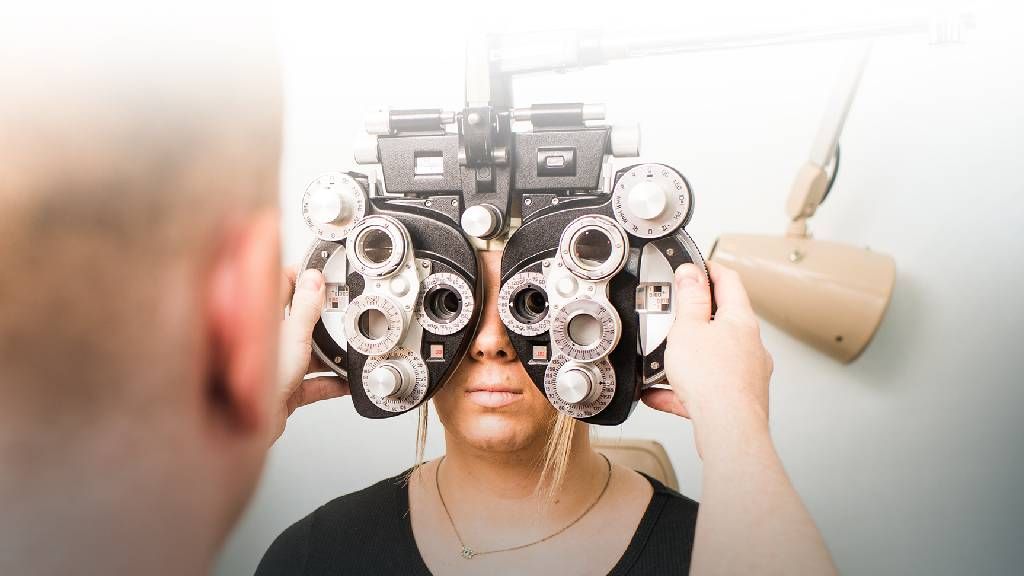Comprehensive Eye Center Andalusia: Quality Eye Treatment Providers
Comprehensive Eye Center Andalusia: Quality Eye Treatment Providers
Blog Article
Comprehending the Different Vision Correction Procedures Available for Clearer View
In the realm of vision modification procedures, a multitude of alternatives exist to attend to refractive mistakes and offer people with clearer view. Allow's explore the ins and outs of these procedures and dropped light on the path to achieving enhanced vision quality (Eye Center Andalusia).
LASIK Surgery
LASIK surgical procedure is an usual refractive procedure made use of to fix vision issues such as farsightedness, astigmatism, and nearsightedness. This surgical technique, which represents Laser-Assisted sitting Keratomileusis, aims to reshape the cornea to boost how light is concentrated on the retina, eventually boosting vision quality. Throughout the treatment, a slim flap is developed on the cornea, and a laser is used to eliminate accurate amounts of tissue to reshape it properly. This improving permits for light to be properly concentrated onto the retina, remedying refractive mistakes.
One of the primary advantages of LASIK surgical treatment is the fast enhancement in vision experienced by clients. Many people observe a considerable enhancement in their eyesight instantly after the procedure. In addition, a lot of clients report minimal discomfort and discomfort throughout the surgery and healing duration. The healing time for LASIK is relatively fast, with numerous individuals returning to their daily tasks within a day or 2 post-operation. In general, LASIK surgical procedure is a prominent option for individuals looking for a long-term remedy for their vision problems.
PRK Procedure

PRK is a suitable choice for people with slim corneas or those at a greater threat of eye injuries, as it does not include producing a corneal flap. The healing procedure for PRK is a little longer contrasted to LASIK, as the epithelium requires time to regenerate. Clients might experience pain and blurred vision for a couple of days complying with the treatment.
Regardless of the longer recuperation time, PRK can generate excellent lead to vision improvement, making it a useful choice for those that might not be ideal prospects for LASIK surgical procedure. - Neurologist Andalusia
Implantable Lenses
In comparison to PRK where the cornea is reshaped straight, implantable lenses supply an additional technique for remedying vision by placing man-made lenses inside the eye. This treatment is especially helpful for people with high degrees of nearsightedness, farsightedness, or astigmatism who may not be appropriate candidates for laser surgical procedures like LASIK or PRK.
Implantable lenses, also called phakic intraocular lenses, work by supplementing the eye's all-natural lens with a man-made one. These lenses can be put in front of the all-natural lens (anterior chamber) or behind the iris and in front of the all-natural lens (posterior chamber) By adjusting the power and positioning of these lenses, ophthalmologists can effectively see it here deal with refractive mistakes and enhance aesthetic acuity.
One advantage of implantable lenses is that they are removable and exchangeable, offering flexibility for future modifications. However, as with any kind of surgical treatment, there are dangers entailed, such as infection or cataract formation. Clients considering implantable lenses should talk to an eye care professional to figure out one of the most appropriate option based upon their individual requirements and eye wellness.
Corneal Rings

The treatment for putting corneal rings is relatively quick and minimally invasive, commonly executed as an outpatient procedure. Throughout the surgery, the ophthalmologist makes a small incision in the cornea and inserts the rings at a certain deepness. Once in location, the rings aid to improve the cornea, offering a smoother surface area for light to go into the eye, which can lead to clearer vision.
Corneal rings are considered a reversible procedure, as they can be removed or replaced if essential. While they might not entirely get rid of the requirement for glasses or get in touch with lenses, corneal rings can considerably improve vision quality and total aesthetic convenience for people with keratoconus or various other corneal irregularities.
Refractive Lens Exchange
Following the adjustment of corneal abnormalities with treatments like corneal rings, one more vision Extra resources improvement strategy that can deal with refractive errors is Refractive Lens Exchange (RLE) RLE is an operation that involves changing the eye's all-natural lens with an artificial intraocular lens (IOL) to deal with refractive errors such as farsightedness, nearsightedness, and presbyopia. This treatment is especially advantageous for individuals that may not be ideal candidates for procedures like LASIK or PRK because of variables such as slim corneas or high refractive mistakes.
Recovery time for RLE is relatively fast, and patients can expect enhanced vision quickly after the treatment. As with any kind of medical procedure, prospective dangers and difficulties exist, so a comprehensive assessment with an eye care professional is vital to establish if RLE is the right vision correction option.
Conclusion

In why not find out more the world of vision correction procedures, a plethora of choices exist to attend to refractive mistakes and supply people with clearer sight.LASIK surgery is a common refractive treatment made use of to remedy vision issues such as astigmatism, farsightedness, and nearsightedness.While additionally an usual refractive procedure, the PRK (Photorefractive Keratectomy) strategy varies from LASIK surgery in its technique to dealing with vision problems.Complying with the adjustment of corneal irregularities with procedures like corneal rings, another vision correction strategy that can resolve refractive mistakes is Refractive Lens Exchange (RLE) LASIK surgical procedure, PRK treatment, implantable lenses, corneal rings, and refractive lens exchange are all options that can address various vision issues.
Report this page